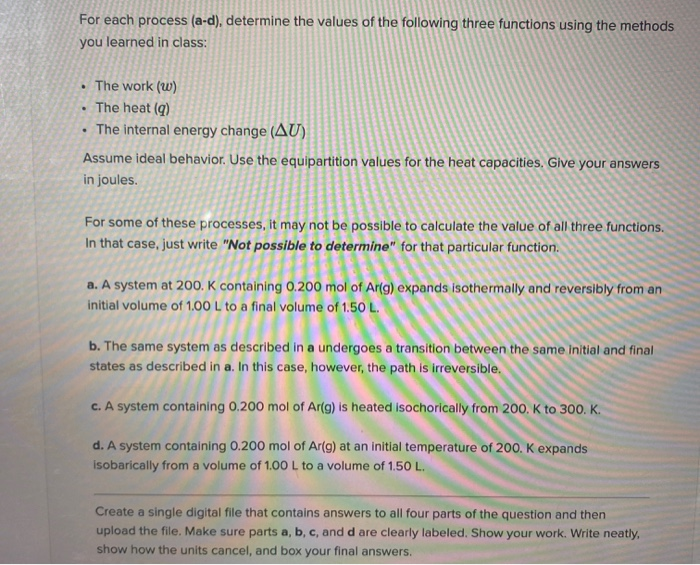For each process (a-d), determine the values of the following three functions using the methods you learned in class: The work (w) The heat (q) • The internal energy change (AU) Assume ideal behavior. Use the equipartition values for the heat capacities. Give your answers in joules. For some of these processes, It may not be possible to calculate the value of all three functions. In that case, just write "Not possible to determine" for that particular function. a. A system at 200. K containing 0.200 mol of Ar(g) expands isothermally and reversibly from an initial volume of 1.00 L to a final volume of 1.50 L. b. The same system as described in a undergoes a transition between the same Initial and final states as described in a. In this case, however, the path is irreversible. c. A system containing 0.200 mol of Ar(g) is heated isochorically from 200, K to 300. K.
Thermochemistry
Thermochemistry can be considered as a branch of thermodynamics that deals with the connections between warmth, work, and various types of energy, formed because of different synthetic and actual cycles. Thermochemistry describes the energy changes that occur as a result of reactions or chemical changes in a substance.
Exergonic Reaction
The term exergonic is derived from the Greek word in which ‘ergon’ means work and exergonic means ‘work outside’. Exergonic reactions releases work energy. Exergonic reactions are different from exothermic reactions, the one that releases only heat energy during the course of the reaction. So, exothermic reaction is one type of exergonic reaction. Exergonic reaction releases work energy in different forms like heat, light or sound. For example, a glow stick releases light making that an exergonic reaction and not an exothermic reaction since no heat is released. Even endothermic reactions at very high temperature are exergonic.

Trending now
This is a popular solution!
Step by step
Solved in 5 steps with 4 images








